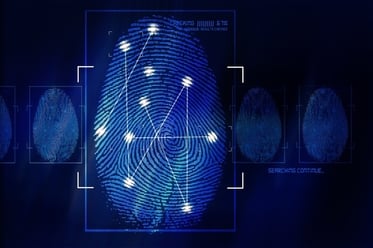 An automated fingerprint identification system has been touted as the future of business and a secure way to ensure employee attendance and company data – but does your business really need one? Before dismissing the idea of an automated fingerprint identification system, consider these reasons on why you need, or don't need, one implemented in your workplace.
An automated fingerprint identification system has been touted as the future of business and a secure way to ensure employee attendance and company data – but does your business really need one? Before dismissing the idea of an automated fingerprint identification system, consider these reasons on why you need, or don't need, one implemented in your workplace.
Security
The use of an automated fingerprint identification system is most often implemented in industries that require strict security. Nuclear power, hospital records and government information are just three of the industries that require employees to meet strict guidelines on security.
In addition to background checks, an automated fingerprint identification system ensures that the only person accessing an employee's information is that employee. Any industry that needs its confidential information secured should considering a biometric system, such as those that use fingerprints, to keep that information safe.
Restricted Access
While few industries are highly concerned about information security, many are interested in restricted access. Whether it's preventing retail staff from accessing company warehouses or ensuring only managers have access to liquor storage in a busy restaurant, the ability to restrict access to information or space is essential to preventing theft and waste. For industries that need differentiation between positions and access, an automated fingerprint identification system is a simple way to provide security and ensure those employees who need access have it safely and easily.
Time Theft Prevention
One reason automated fingerprint identification systems are being implemented outside of security is to prevent the nearly five percent of payroll costs lost to time theft. Those costs add up and removing the temptation for payroll theft in the form of a biometric timekeeping device is alluring for businesses. By using fingerprints, employee presence during clock-ins and clock-outs is assured. Unlike badges or PINs, a fingerprint can't be lost, forgotten or misplaced, which reduces human resources time spent resetting accounts and relying on employee recollection for timekeeping. One of the basic uses of an automated fingerprint identification system for everyday industries is to prevent time theft.
Employee Privacy
Despite the large scale switch to biometric technology, the ongoing legal discussions about the difference between identity and identification make some employers nervous about implementing a fingerprint identification system. While fingerprint biometrics transmit fingerprint scans as a unique code, the addition of employee information to that code can raise legal and ethical questions. To combat this risk, automated fingerprint identification systems should not be implemented without education and assessment. Considering what information is required and preferred to store within those fingerprints and educating employees about those choices is essential.
While many implementations proceed without objection, an alternative for those with religious objections may be required. Employee privacy and comfort should be at the forefront of any company considering implementing a fingerprint identification system for timekeeping and security.
Why your business should consider using a biometric identification system
An automated fingerprint identification system can be a great boon to companies. The one-stop shop approach to security, access and timekeeping is attractive for companies and easy to use for employees. Still, it's important to weigh those benefits against employee privacy concerns and provide information and education to employees prior to implementation.
